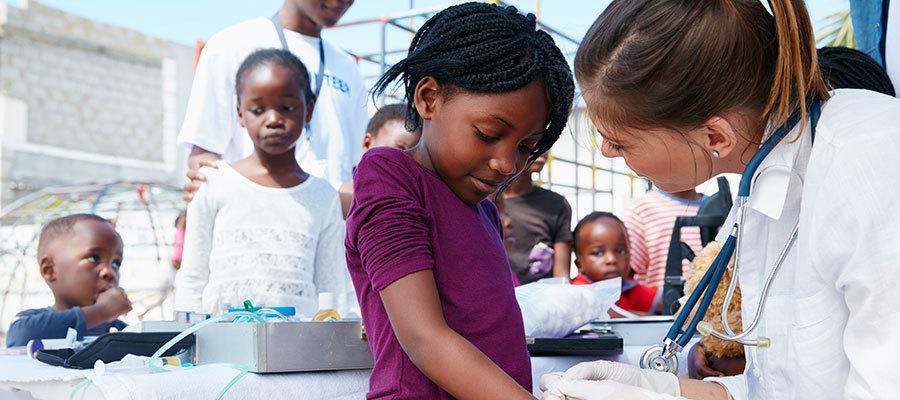Inaugural Equity of Care Briefing Examines the Role of the Social Determinants of Health

The inaugural Equity of care briefing at the recent AHA Annual Membership Meeting focused on the social determinants of health and the role they play in health disparities.
The briefing kicked off with a special announcement by AHA Immediate Past Chair Gene Woods, president and CEO of Atrium Health, and Janet Murguia, president and CEO, UnidosUS, detailing a new alliance between AHA and UnidosUS to increase diversity among health care executives and improve the health of communities.
“This shared mission is especially important to the Latino community, which continues to be the group most likely to lack access to health care,” said Murguia.
The alliance builds on the AHA’s work with the National Urban League. The organizations will work together to increase diversity within hospital and health system governance; promote and advise the Culture of Health grant from the Robert Wood Johnson Foundation; and collaborate on youth violence prevention and post-trauma support. “These are important social issues that as a nation we must really address,” Woods said, referring to the consequences diversity often imprint on health outcomes. “As hospitals, we have no choice but to address them daily.”
AHA Board Member Wright L. Lassiter III, president and CEO, Henry Ford Health System, then moderated a panel discussion on the social determinants of health and their impact on our communities. The panelists included Maurice A. Jones, president and CEO, Local Initiatives Support Corporation (LISC); Amy Mansue, president Southern Region of RWJBarnabas Health; and Rita Carreon, deputy vice president, health, UnidosUS.
Acknowledging the difficulty in achieving health outcomes without access to good jobs, safe and affordable housing, food security and education will not only inform a comprehensive strategy to address the social determinants of health, but also increase opportunities for everyone in the community to reach their highest potential for health, Lassiter said. The panelists shared their perspectives on how to jumpstart critical action on accelerating health equity, the importance of building relationships in the community and the role of collecting the right data to close disparity gaps.
Building community partnerships and fostering untraditional partnerships around addressing the social determinants of health is key, said panelists. LISC, a community development financial institution, has committed $10 billion over the next 10 years toward fighting the social determinants of health fight with health care. “We can only do it if we are doing it with health care,” said Jones.
RWJBarnabas Health in New Jersey is accelerating its efforts to address the social determinants of health through its new Social Impact and Community Investment Department. As hospitals and health systems engage in population health activities, meeting their partners and community members on their turf and “sitting where they sit and face their challenges day in and day out is critical,” said Mansue.
Panelists also agreed ensuring the collection of proper data — such as race, ethnicity, language and gender orientation— is a key driver to identifying social determinants of health and addressing health care disparities. When implementing the various methods to close disparity gaps, Carreon advises hospital and health system leaders to “be bold and be patient.”
To learn more about the work the AHA is doing around the social determinants, health equity and diversity, visit www.diversityconnection.org.

